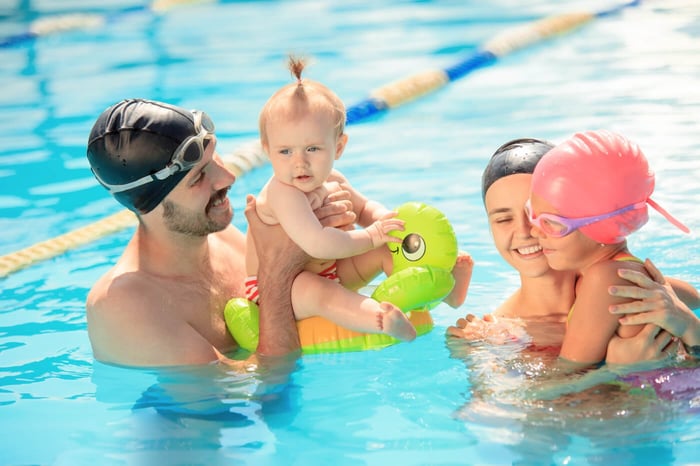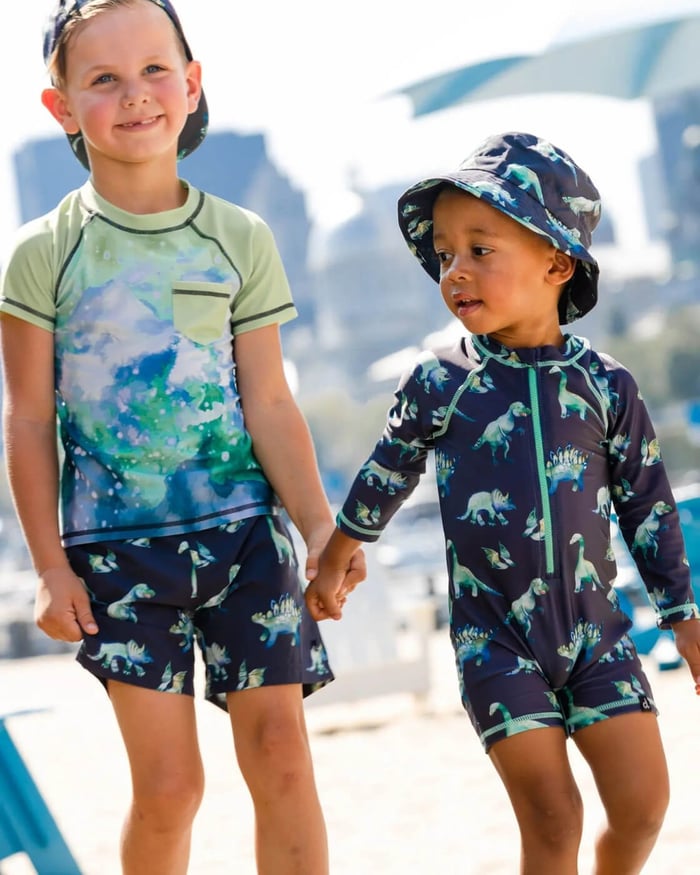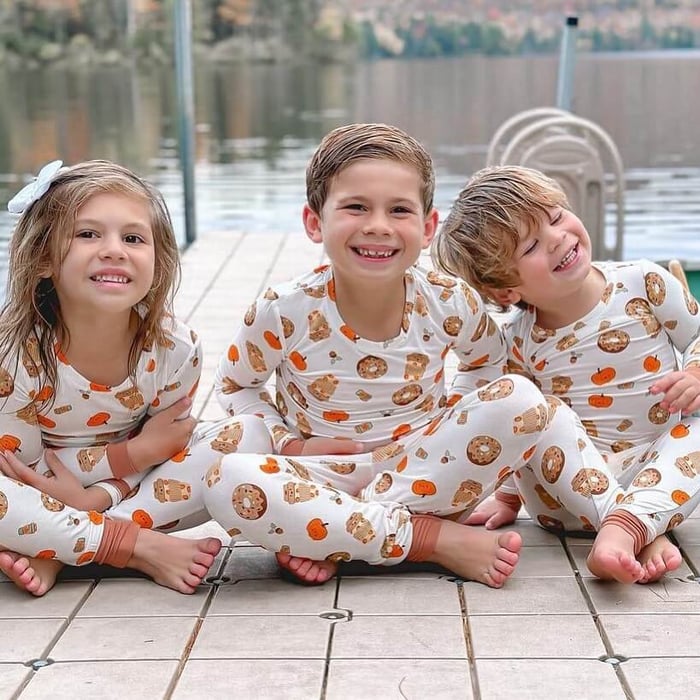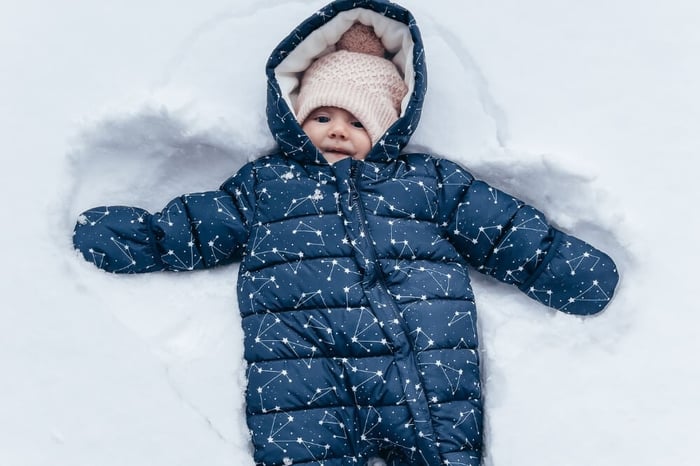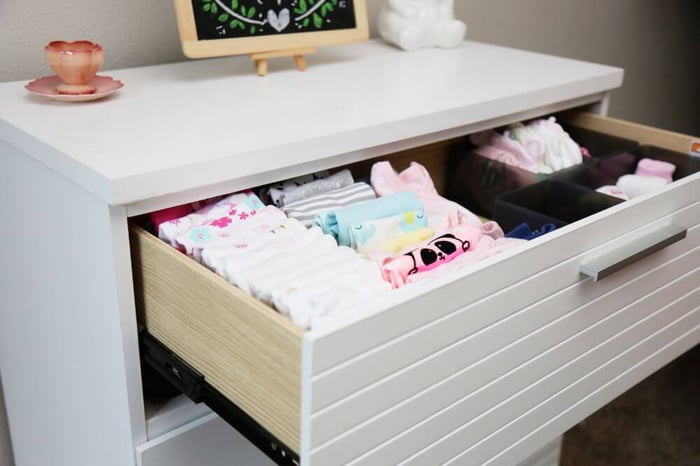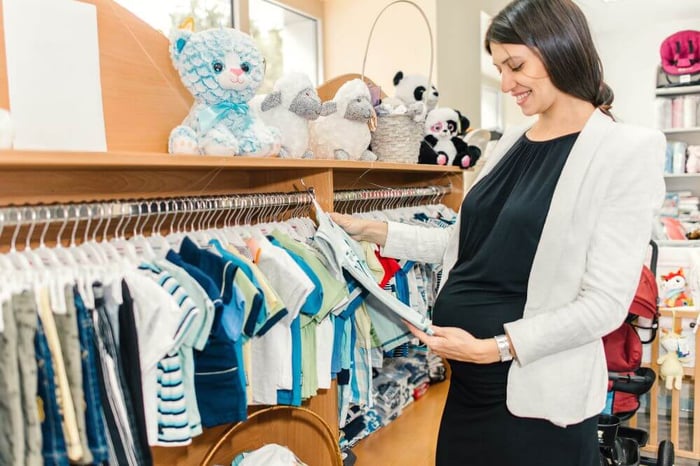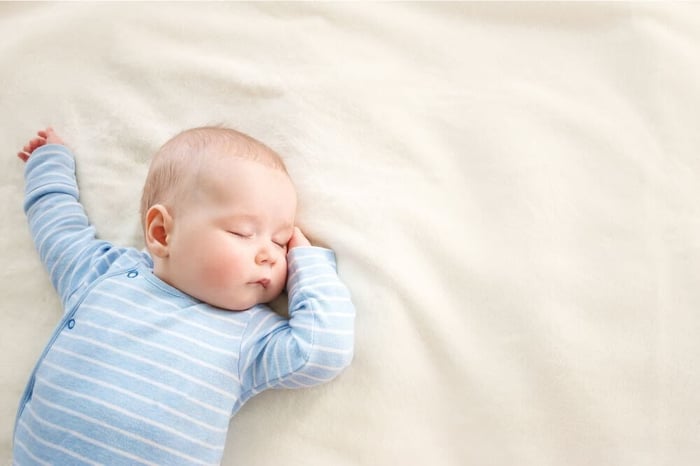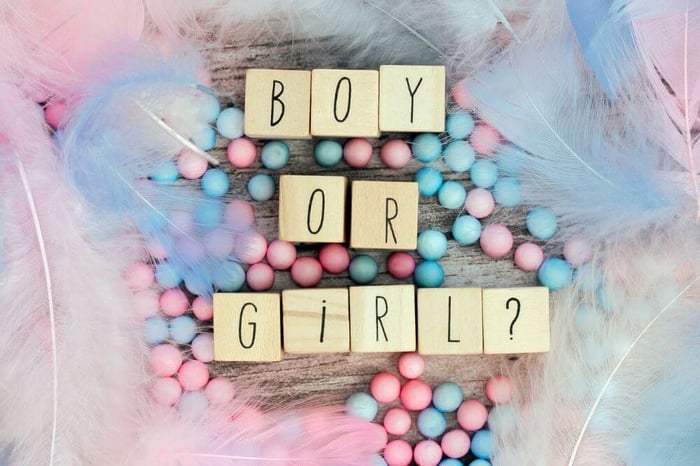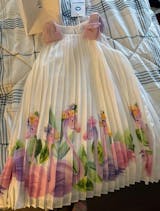With the anticipation of the big day when you can finally introduce your little one to the wonderful world of swimming, you might ask, what does your baby need to wear for their first swim? Let's explore the clothing options and essentials in detail.
Choosing The Right Baby Boy Swimwear
Swimwear for babies must fit well. A good fit ensures comfort and safety. Too loose, and it might slip off. Too tight, and it may restrict movement and bother your baby. Therefore, always measure your baby's height and weight before purchasing.
Swim Diapers
Beyond a bathing suit, a swim diaper is an essential accessory for your baby boy. Traditional diapers will swell upon contact with water and can even break apart in the pool. Opt for specially designed swim diapers, built with materials that can handle submersion without absorbing water.
Sun Protection Swimwear
Remember that your child's skin is sensitive and can easily burn, so protection from the sun is crucial. Consider sunsuit swimwear or swimwear with a built-in UV protection feature. Always look for swimwear with a UPF rating 50+, which blocks 98% of harmful rays.
$44.00 CAD
Keep them comfortable while they splash and play in this fun, King Crab On Crème Swim Romper | Miles The Label. Made from recycled nylon, the romper has a tight fit that provides a barrier against salty waters and chilly… read more
$44.00 CAD
Made for wriggly little water lovers, this kiwi-print swim romper keeps baby boys comfy and covered in one easy piece. The soft crème fabric is scattered with bright kiwis, while long sleeves and short legs give extra protection from sun… read moreKing Crab On Crème Swim Romper | Miles The Label

Kiwi Print On Crème Swim Romper | Petit Lem

Rash Guards
Rash guards are a great option if your baby has sensitive skin. These shirts offer extra protection from the sun's harmful rays. They also minimize the chances of your baby developing skin irritations. Rash guards are made of fabric that doesn't retain heat, keeping your little one cool during swimming.
$54.00 CAD
For sunny pool days and beach getaways, this Petit Lem two-piece rash guard set keeps little ones comfy and covered. The navy raglan top and striped submarine-print shorts are made from soft recycled nylon with built-in UPF 50+ to help… read more
$54.00 CAD
Turn any pool day into a mini vacation with this Petit Lem palm tree two-piece rashguard swim set in red and white. The long-sleeve raglan top features a fun palm chest graphic on a crisp white body with contrast red… read moreNavy Raglan Rashguard and Submarine Swim Shorts Set | Petit Lem

Palm Tree Raglan Rashguard and Striped Swim Shorts Set | Petit Lem
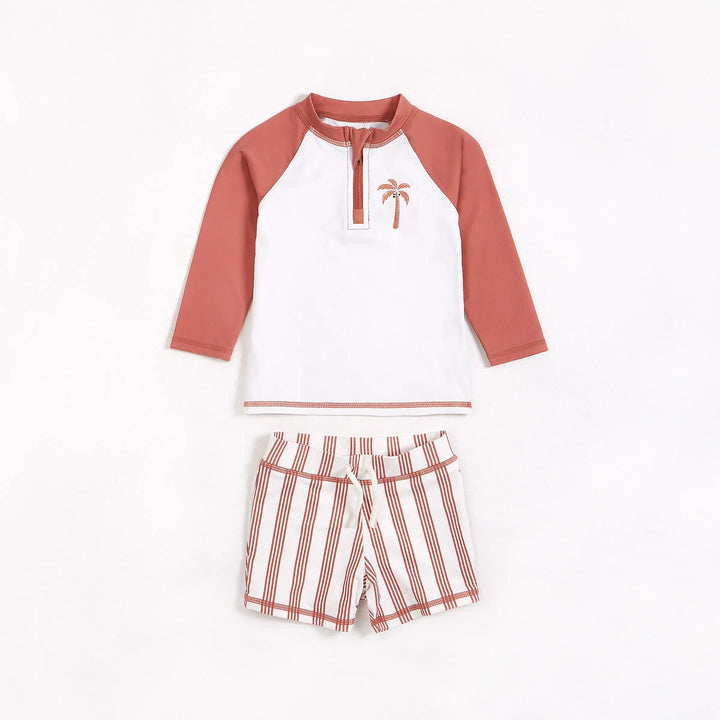
Water Shoes
Water shoes are recommended to prevent your baby from slipping or stepping on sharp objects in and around the pool. These shoes also provide extra grip for babies making their first attempts at walking.
Sun Hats
Your baby's delicate skin needs added protection from the sun while at the pool or beach. Sun hats not only shield your baby's face and neck from harmful UV rays, but they also help keep them cool. Choose a hat with a wide brim for the best coverage. Looking for a baby-friendly sun hat? There are numerous options available. A hat with UPF (Ultraviolet Protection Factor) rating will offer excellent protection against harmful sunshine. This kind of hat is made specifically to block UV rays, making it the go-to choice for baby's day out swimming. Another desirable feature in a sun hat is an adjustable chin strap, preventing the hat from slipping off.
Sunscreen
But remember, while hats offer valuable protection, they should be used with sunscreen for proper sun safety. Apply a broad-spectrum sunscreen of at least SPF30 to your baby's exposed skin, and reapply every two hours or more frequently if swimming or sweating. Always try to prevent prolonged direct sun exposure.
Bathing Suit Options for Baby Girls
Just as there are boy swimwear options, there are plenty of choices for baby girl swimwear as well. From traditional one-piece bathing suits and frilly tutu swimsuits to swim rompers and sets of tankini, your little girl's a vast array of options. But remember, the goal is her comfort and safety!
One-Piece SwimSuits
These are classic bathing suit styles that provide excellent coverage. Often equipped with snaps at the bottom for smooth diaper changes, one-piece swimsuits are fantastic go-to for infant girls.
$46.00 CAD
This Petit Lem baby girl and girl one-piece swimsuit in rose starfish print is ready for every bucket, wave, and sandcastle. The soft rose base is sprinkled with playful starfish and finished with fluttery frills along the straps and hips,… read more
$46.00 CAD
This Petit Lem baby girl and girl one-piece swimsuit in Swan Balloon Jazzberry is a dreamy pick for tiny swimmers and big sisters. The dark pink jazzberry base is dotted with cute swans holding balloons, while soft frilly straps at… read moreStarfish Print On Rose One-Piece Swimsuit | Petit Lem

Swan Balloon Print On Jazzberry One-Piece Swimsuit | Petit Lem

Tutu Swimsuits
Seeking something more adorable? Tutu swimsuits often come with ruffles around the waist, adding a dash of charm to your baby girl's swim look. They're equally functional, usually made from swim-friendly materials that dry quickly.
Swim Rompers
Swim rompers are a cute alternative to traditional baby girl swimwear. With an attached skirt, they offer added coverage and a playful look. The upper part usually comes with straps, making it easy to adjust and fit.
Two-Piece Sets (Tankinis)
If you're looking for something that offers the ease of diaper changes like a two-piece but with one-piece coverage, a tankini can be your go-to. The top is generally longer, covering the stomach while the bottoms are like normal swimsuit bottoms.
$55.00 CAD
Floral On Deep Pink Long-Sleeve Rashguard Swim Set | Miles The Label This pretty-in-pink rash guard set has long sleeves to help protect delicate skin from cold or salty water. The playful set features a floral print and is finished… read more
$55.00 CAD
Mermaid Print On Aqua Long-Sleeve Rashguard Swim Set | Miles The Label Little girls that need extra protection from chilly, harsh waters will love this mermaid rash guard set. With long sleeves, the set offers an additional layer between their… read moreFloral On Deep Pink Long-Sleeve Rashguard Swim Set | Miles The Label
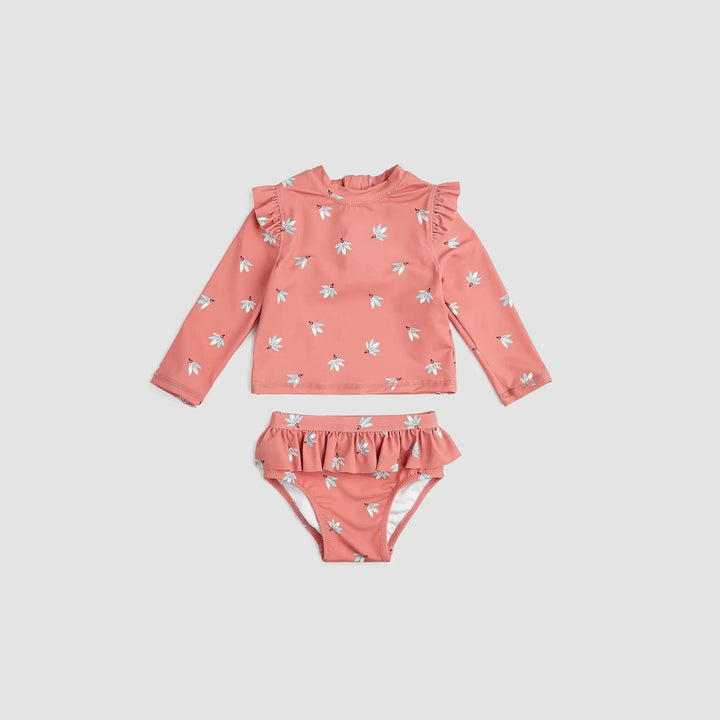
Mermaid Print On Aqua Long-Sleeve Rashguard Swim Set | Miles The Label

When Can Babies Start Swimming?
The good news is you don't have to wait long! You can start taking your baby to swim from an early age. However, formal swimming lessons typically begin around six months, when babies can sit up alone. This age is not a strict rule and can vary depending on the baby's development and comfort level. Always consult with your pediatrician before starting any new activities with your baby.
What To Consider Before Taking Your Baby Swimming
While it's exciting to think about your baby splashing around in the pool, you need to consider a few crucial factors before diving in. First and foremost, ensure that the water is warmed to a baby-friendly temperature of around 32°C (89.6°F). Babies can lose body heat quickly, making them more vulnerable to the cold than adults.
Secondly, it's vital to consider water cleanliness. Babies have still-developing immune systems and could easily pick up an infection from dirty water. Look for swimming pools that maintain a stringent cleaning routine and, if possible, opt for pools that use less chlorine as it could irritate the baby's sensitive eyes and skin.
Lastly, always remember the swim diaper. Regular diapers swell up and become heavy in water, making your little one uncomfortable. Swim diapers are designed to contain messes without absorbing water, making them perfect for pool use.
Preparing Your Baby for Their First Swim
Preparing for a baby's first swim is similar to preparing for a regular bath. It's essential to make them feel comfortable and safe. You can ease them into the water with soft toys and playful splashing. Make sure always to maintain a soothing and positive environment, as your baby will reflect your vibes and emotions. Over time, these positive experiences will help build a healthy association with water and swimming. But, even in a positive environment, remember that it's critical to watch your little one closely during this new experience. You can never be too cautious regarding your child's safety in and around water. Children must always be supervised when near water, whether in a pool, bathtub or at the beach.
With patience and encouragement, learning skills such as floating, kicking, and submerging their head underwater should be taught one step at a time. Babies inherently hold their breath underwater, but it's crucial to introduce submersion gradually, treating it as a fun game rather than a dreaded task. Also, remember that their ears, eyes, and sensitive body parts are still adjusting to the new environment, so avoid sudden splashes.
Getting Used to Swim Gear
Just like you wouldn't put your baby to bed in a new pacifier without first helping them get used to it, you should also take time to help them feel comfortable with any swim gear before entering the water. Swim Caps goggles, and flotation devices should be introduced slowly and playfully. Make these items a fun accessory rather than a new, unfamiliar, and potentially scary requirement.
Transitioning from Baths to Swimming
Helping your baby transition from baths to swimming can be gradual and enjoyable. You can start by adding more water to their bath each time and, later, moving bath toys from the tub to the pool's shallow end. This can create continuity for your child, making the transition seamless and less daunting.
Valuing Water Safety
Beyond enjoying the water, it's important to instill a sense of safety and respect for water in your child from an early age. Consistently enforcing the rule of never entering the water without an adult present is an excellent first step. Through this, your little one will develop a vital water safety habit, setting a solid foundation for future swimming experiences. Moreover, teaching them the importance of not running or pushing around the swimming pool is critical. Accidents can happen, and the wet and slippery surface around a pool is a common place for injuries. Make sure your child understands this to prevent any unfortunate incidents.
Introducing Them to the Pool
Bringing your baby to a public pool for the first time can be a memorable experience. While your excitement might be contagious, taking a slow and steady approach is essential. Start by introducing your youngster to a smaller, controlled environment like a baby pool or a tub where you can maintain a firm grip and direct eye contact. This reduces the risk of any stressful or potentially dangerous situations.
Recognizing Fear and Apprehension
It's natural for your baby to feel nervous or fearful around water for the first time. Noticing these feelings and knowing how to respond is crucial for creating a positive swimming experience. Comfort them with soothing words, maintain close physical contact, and reassure them they are safe with you. Over time, they'll associate swimming with feeling secure and fun.
Be Consistent
Consistency is critical to ensuring your baby becomes familiar and comfortable with swimming. It's advisable to plan regular swimming sessions, preferably once a week, to familiarize them with the water and instill a love for swimming. Remember, each baby is unique, and the pace at which they become comfortable can greatly vary, so it's essential to be patient and let them take their time. As you consistently expose your baby to water, swimming will gradually become a part of their routine, and they will enjoy it even more. The moment will eventually come when it’s no longer an unfamiliar environment for them but instead, something they look forward to. It'll become a delightful adventure filled with fun splashes and giggles, creating enjoyable memories for both of you. Develop a compatible schedule that considers the baby’s nap times, ensuring the swimming sessions are at a time when your child is alert and ready to engage.
Respecting Their Space and Boundaries
As you guide your baby into the water, remember their comfort zone. Maintain close physical contact at all times during the initial stages of swimming. This will ensure they feel safe and secure, even in an unfamiliar environment like the water. Dealing with any signs of discomfort promptly will help build their trust in you and the process. Never force your baby into the water if they are crying or seem scared; it may increase their fear and create a negative experience.
Nurturing Confidence and Independence
Over time, as your little one acquires more familiarity with the water, they might start showing signs of wanting to explore independently. It's an exciting milestone when your baby displays independence in the water. However, it's crucial to maintain a balance between encouraging their independence and ensuring their safety. Always stay within arm's length, ready to support them if needed. This approach allows them to explore while knowing you are there for safety. It's a great way to instill confidence while teaching them to respect and understand the water. This intrinsic confidence will aid their mental development and, in the long run, help them become better swimmers. Once your baby feels secure with you close by, it's time to gradually introduce toys that can be used to create a playful environment. This can include waterproof toys that float or even simple plastic cups that can be used to scoop and pour water.
Parental Supervision - A Non-Negotiable
Never leave your baby unsupervised near water, not even for a moment. It's the cardinal rule of baby water safety. Babies can inadvertently turn or slip, putting themselves in danger within seconds. Moreover, they need to gain the motor skills to right themselves if they fall under. Once they are competent swimmers, your eyes should stay on your little water explorer, no matter how shallow the water is.
Going Beyond the First Dip
As your baby grows and develops, you can start incorporating more advanced water activities, such as swim lessons, where they can learn fundamental skills like kicking and breath control. As your baby becomes a toddler, their interaction with water will ideally be a mix of play and learning, fostering a love for swimming and encouraging them to embrace this incredible skill that can serve them for life.

FAQ: Let's review some of the most common inquiries from parents starting this new adventure with their little ones.
Is Swimming Water Safe for Babies?
Babies can safely swim in clean, treated water. Ensure the water's chlorine levels are checked regularly, and that the pool, if used, adheres to hygiene standards. For the baby's safety, avoid water with uncertain cleanliness, like lakes or ponds.
Can I Take My Baby to a Public Pool?
Absolutely! But once again, hygiene and cleanliness are essential. A well-maintained public pool with stringent cleanliness procedures is fine. Remember to ensure your baby is comfortable and eases in slowly.
What Should Babies Wear for Swimming?
Proper swimwear designed for infants and babies is recommended. This includes a swim diaper, and baby-appropriate swimsuits that give sun protection and retain warmth. Always bring a change of dry clothes post-swim.
What is the Best Age for Babies to Start Swimming?
There's no definitive answer as it can differ from baby to baby. However, most pediatricians agree that infants can start swimming after their first immunizations, typically around 2-3 months old.
Should I Be In the Water with My Baby?
Yes, most definitely! Your presence will instill confidence and security in your baby. Plus, it's a wonderful opportunity to bond and make memories.
What if My Baby Does Not Like Swimming?
Some apprehension is normal, and it may take a few attempts for the baby to warm up to the water. If resistance persists, consult with your pediatrician or a child behaviour expert. It’s all about patience and the baby’s comfort. If your little one is not too keen on swimming, remember not to force the experience. It's about fostering an enjoyable and relaxed environment, and sometimes this means taking it slow.
No matter how much your baby enjoys, never leave them unattended in the water even for a split second. While pool safety devices like floaties can be fun, these are not substitutes for parental supervision.
Bottom line
Taking your baby swimming can be a delightful experience for you and the baby. With the proper preparations, your little one will be prepared to make a splash quickly! Remember, every baby is unique and might need some time to adjust. Be patient, and most importantly, enjoy this fun bonding time with your adorable tot.

